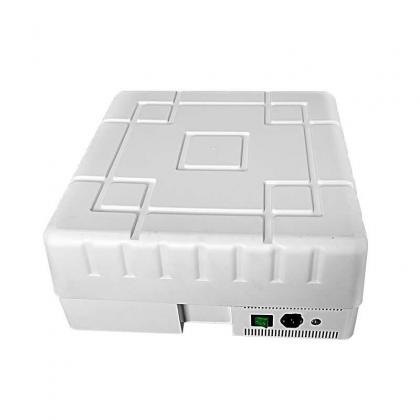The radio frequency band is divided into many discontinuous bands from low frequency to high frequency. Commonly used are HF frequency band, VHF frequency band and UHF frequency band. The higher frequency microwave frequency band is only used for amateur satellite communication and microwave communication experiments. The following is a brief introduction to the propagation laws of commonly used radio bands. Help us make better use of signal jammer.
l. 160m frequency band (1.80~2.00MHz)
This is the lowest frequency band allowed by amateur radio stations. The propagation law of this band is very similar to that of medium wave. During the day, it is mainly based on ground waves for short-distance communication, and at night it can be used for long-distance communication through the reflection of the ionospheric D layer. The best communication time is when both parties are at sunrise and sunset Junction time. In the evening or dawn in winter, it is the time when the 160m frequency band is used for long-distance communication. Because the frequency of this frequency band is relatively low, a huge antenna needs to be erected, and the ionosphere attenuates it relatively large. It requires a relatively large power to achieve long-distance communication. Therefore, there are fewer operators and CW is used for communication.

2. 80m frequency band (3.50~3.90MHz)
The propagation law of this frequency band is similar to that of the 160m frequency band, mainly based on the mixed propagation of the F-layer and the E-layer. In summer and during the day, due to the high electron density in the D and E layers, the radio waves below this frequency band will be absorbed and cannot be reflected by the ionosphere. During the day, only a distance of 100-200km can be communicated. At the same time, thunder and lightning often occur in summer, so that there is a lot of noise in the frequency band, and weak signals cannot be heard. In the evening or dawn in winter, the effect of long-distance communication is better than that of the 160m frequency band, and the chance of connecting to a long-distance radio station is also greater. Antennas in this band are also relatively large, but they are much smaller than those in the 160m band. Moreover, there are now many shortened product antennas, making it easier to set up antennas in this band. Generally, simple erection of horizontal half-wave dipole antennas is used, and shortened products are mostly vertical grounded antennas. With a large erection site and sufficient funds, a huge Yagi directional antenna can be erected on a tower of tens of meters! The antenna with good effect needs to be tall and long enough.
3. 40m frequency band (7.00~7.10MHz)
This is one of the entry frequency bands for shortwave beginners and the most crowded and lively frequency band. The operating range of this frequency band is relatively narrow, but most of the QSO can be carried out throughout the day almost throughout the year. During the day, it can be connected for hundreds of kilometers. It is a good opportunity to open long-distance communication in the evening or dawn. The crowding in the frequency bands, coupled with the severe noise in their own frequency bands, brings together a prosperous market picture. In the middle of the night, it is often a good time for intercontinental communication. Therefore, HAM, which often hunts rare radio stations in this band, has the reputation of "night owl". Many domestic HAMs use LSB to communicate between 7.050 and 7.070 MHz, and many provinces also set up fixed local networks on certain frequencies. The antenna of this frequency, whether it is a simple dipole antenna, a vertical ground antenna or a complex Yagi rotating directional antenna, can enjoy the fun. Some people even clip a shortened whip antenna to the car and cross the continent on the way to and from get off work. Provincial communications.
4. 20m frequency band (14.00~14.350MHz)
This frequency band is the famous DX (long-distance communication) frequency band, because this frequency band mainly relies on the ionospheric F layer for global communication. The characteristic of this band is that the propagation is relatively stable, the solar activity and seasonal changes have relatively little influence on the propagation, and the ionosphere is open for a long time. In the winter, the spread is slightly worse. The spread is mainly in Southeast Asia, and the global spread is started in the spring and autumn. In the summer, there is the possibility of DX communication even in the daytime. Most international competitions and radio expeditions can operate in this frequency band. At the same time, most radio stations using this frequency band are also for DX communication. Therefore, this band is the best frequency band for hunting rare radio stations. The most famous one in China is the China Lao Ham.com at the frequency of 14.180MHz. For decades, Chinese Lao Hams from Southeast Asia gather every morning at this frequency, which is called a morning tea gathering. The other is the China Radio Sports Association (CRSA) network at the frequency of 14.330MHz. It will be controlled by BY1PK starting at 10 am every Tuesday and will report on the activities of various regions and the recent work arrangements of CRSA. In addition to the commonly used CW and USB communication modes, this frequency band can also be used for RTTY and SSTY communication. Antennas in this frequency band can already be made relatively small, and Yagi directional antennas are often used, and the antenna gain is relatively high, and many of them use multi-band shared antennas for operation.
